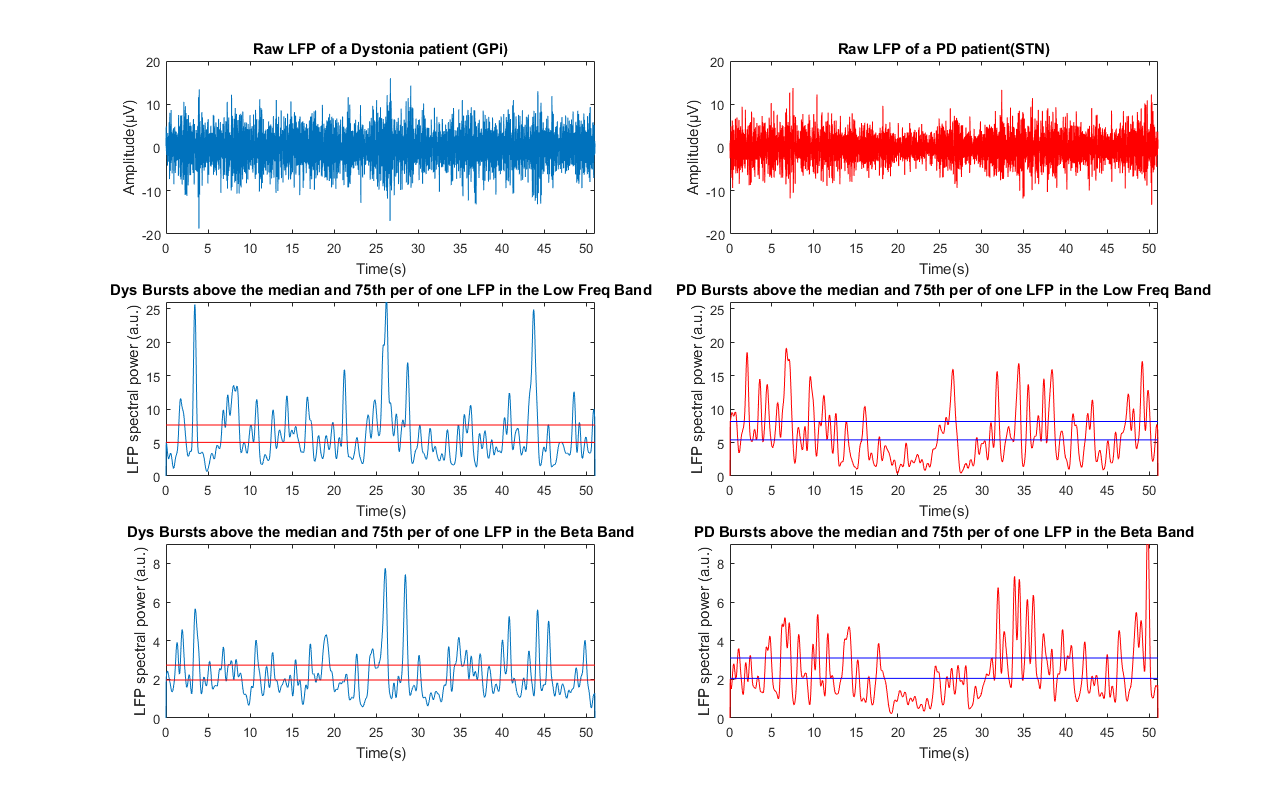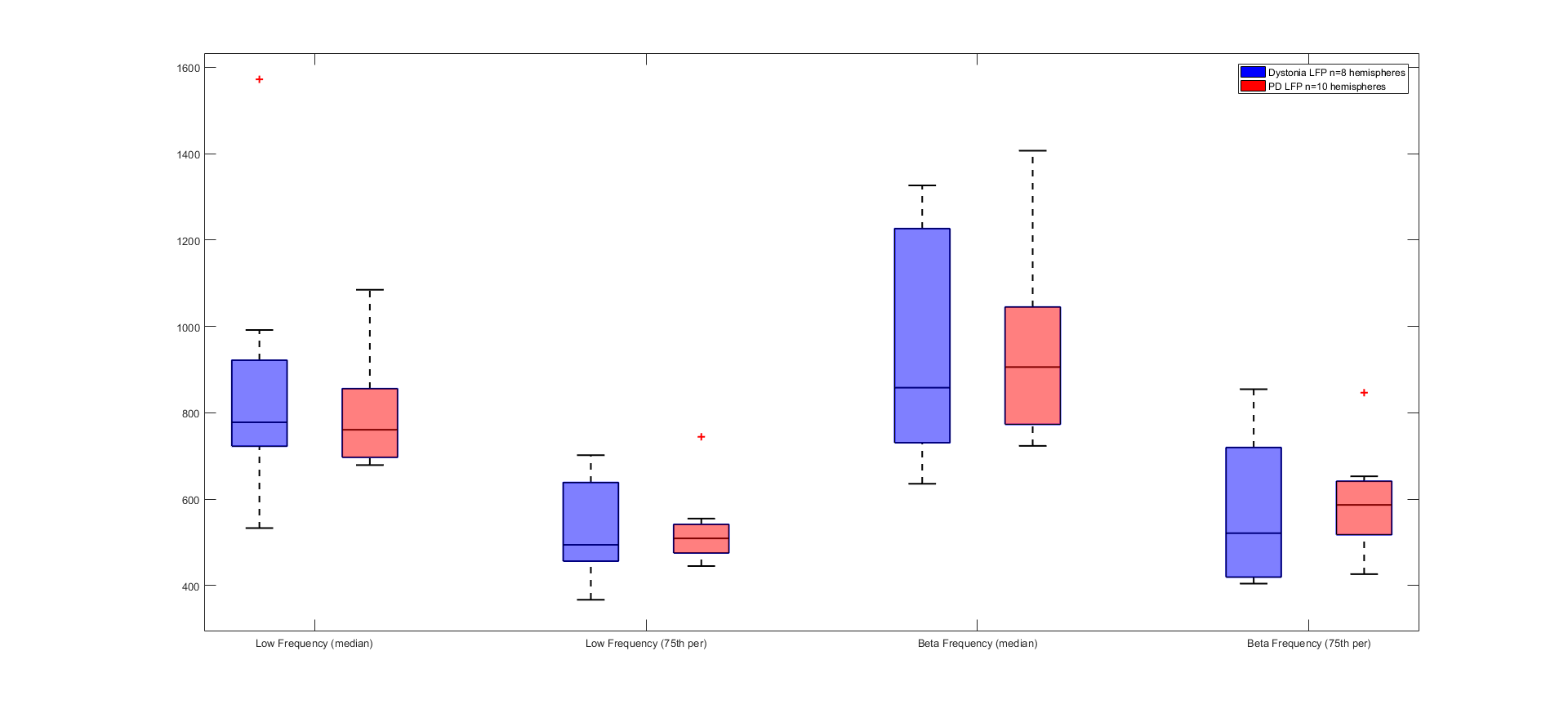Session Information
Date: Thursday, June 8, 2017
Session Title: Dystonia
Session Time: 1:15pm-2:45pm
Location: Exhibit Hall C
Objective: To assess the volatility of low frequency (4-12Hz) and beta-band (13-30Hz) oscillations in local field potentials (LFPs) in dystonia and compare this to LFPs volatility in Parkinson’s disease (PD)
Background: Adaptive deep brain stimulation (aDBS) has been successfully applied in PD using ‘bursts’ of beta oscillations as biomarker to titrate stimulation.(Little & Beudel et al., 2016) Likewise, bursts in the low frequency band might be used as biomarker for aDBS in dystonia.(Huebl et al., 2014) However, the volatility of LFPs oscillations in dystonia has not yet been established.
Methods: Bipolar LFPs were obtained from four dystonia patients (23 LFPs) and five PD patients (30 LFPs) during one-minute rest directly after the implantation of bilateral DBS leads in the GPi (dystonia) or the STN (PD). Time-frequency analyses were performed using a convolution method with a moving Hanning window of 1-sec length and a temporal resolution of 25ms. For every LFP recording, the median and 75th percentile of beta and low-frequency power were obtained. This was used to calculate the average time that beta and low-frequency power spectral density exceeded these thresholds [figure1].
Results: Dystonia patients showed significantly more low-frequency oscillations than PD patients (p=0.005). Nevertheless, the median burst duration above the median (p=0.762) and the 75th percentile (p=0.965) were similar [figure2]. The same held for the beta oscillations (p=0.696 and p=0.696 resp.).
Conclusions: In this pilot study, the volatility of LFP low-frequency and beta oscillations appears to be similar in dystonia and PD. This might implicate that aDBS based on low-frequency oscillations is possible in dystonia.
References: Little, S., Beudel, M., Zrinzo, L., Foltynie, T., Limousin, P., Hariz, M., … Brown, P. (2016). Bilateral adaptive deep brain stimulation is effective in Parkinson’s disease. Journal of Neurology, Neurosurgery, and Psychiatry, 87(7), 717–721. Journal Article. https://doi.org/10.1136/jnnp-2015-310972
Huebl, J., Horn, A., Barow, E., Neumann, W., Bru, C., Brown, P., … Ku, A. A. (2014). Deep brain stimulation suppresses pallidal low frequency activity in patients with phasic dystonic movements. https://doi.org/10.1093/brain/awu258
To cite this abstract in AMA style:
D. Pina Fuentes, J. van Zijl, J.-W. Elting, G. Drost, M. van Egmond, M. Oterdoom, M. Tijssen, M. van Dijk, M. Beudel. The Volatility of Local Field Potential Oscillations in Dystonia and Parkinson’s disease [abstract]. Mov Disord. 2017; 32 (suppl 2). https://www.mdsabstracts.org/abstract/the-volatility-of-local-field-potential-oscillations-in-dystonia-and-parkinsons-disease/. Accessed December 22, 2025.« Back to 2017 International Congress
MDS Abstracts - https://www.mdsabstracts.org/abstract/the-volatility-of-local-field-potential-oscillations-in-dystonia-and-parkinsons-disease/


